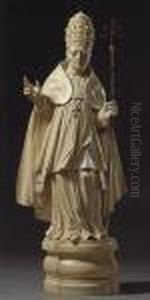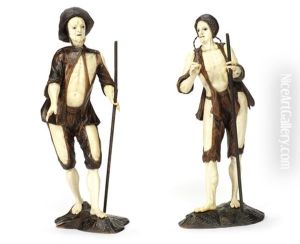Simon Troger Paintings
Simon Troger was a noted German sculptor and woodcarver of the Baroque era, born in 1683 in Wiesensteig, located in the region of Swabia, which is now part of modern-day Germany. He is particularly renowned for his unique and expressive ivory and wood sculptures. Although the exact date of his birth is not well-documented, it is known that he grew up in a time when the arts were flourishing in Europe, particularly in the German-speaking regions.
Troger's early life and training are not well recorded, but it is evident that he developed a strong foundation in the traditional craft of woodcarving, which was a significant art form in Southern Germany. By the time he was active as an artist, he had become highly proficient in handling both wood and ivory, often combining these materials with glass eyes to create figures with vivid expressions and realistic features.
The artist spent much of his career in Munich, where he was active from around 1720 until his death in 1768. His work was in demand, and he received commissions from both religious and secular patrons. Troger's sculptures often featured religious themes, but he also produced secular works that demonstrated his skillful depiction of human anatomy and emotion.
One of the characteristics of Troger's work is his distinctive style that merges the Baroque sensibilities of dramatic emotional expression with a certain Rococo elegance and lightness. His sculptures are noted for their lifelike qualities and their ability to convey the character and mood of the subjects. Troger's figures are typically adorned with richly detailed clothing and accessories, which reflect the fashion of the period and add to the narrative quality of his work.
Simon Troger's contributions to the field of sculpture and woodcarving are significant, particularly in his innovative use of mixed media. His works can be found in various museums and private collections, where they continue to be appreciated for their craftsmanship and artistic merit. He passed away in 1768, leaving behind a legacy that has influenced the art of woodcarving and sculpture in the German-speaking regions and beyond.

